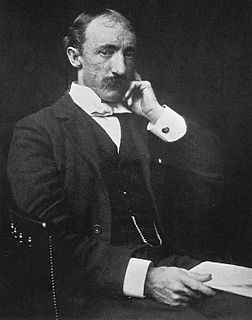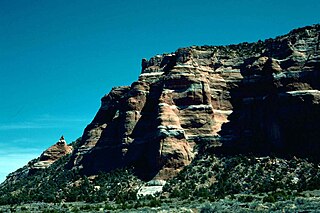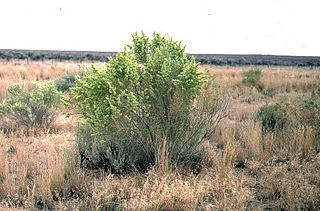Zuni mythology is the oral history, cosmology, and religion of the Zuni people. The Zuni are a Pueblo people located in New Mexico. Their religion is integrated into their daily lives and respects ancestors, nature, and animals. Because of a history of religious persecution by non-native peoples, they are very private about their religious beliefs. Roman Catholicism has to some extent been integrated into traditional Zuni religion.

Zuni Pueblo is a census-designated place (CDP) in McKinley County, New Mexico, United States. The population was 6,302 as of the 2010 Census. It is inhabited largely by members of the Zuni people.

The Zuni are Native American Pueblo peoples native to the Zuni River valley. Today, the Zuni are a Federally recognized tribe and most live in the Pueblo of Zuni on the Zuni River, a tributary of the Little Colorado River, in western New Mexico, United States. The Pueblo of Zuni is 55 km (34 mi) south of Gallup, New Mexico. The Zuni tribe lived in multi level adobe houses. In addition to the reservation, the tribe owns trust lands in Catron County, New Mexico, and Apache County, Arizona. The Zuni call their homeland Halona Idiwan’a or Middle Place. The word Zuni is believed to derive from the Western Keres language (Acoma) word sɨ̂‧ni, or a cognate thereof.

Frank Hamilton Cushing was an American anthropologist and ethnologist. He made pioneering studies of the Zuni Indians of New Mexico by entering into their culture; his work helped establish participant observation as a common anthropological research strategy.

USCGC Tamaroa (WAT/WMEC-166), originally the United States Navy Cherokee-class fleet tugUSS Zuni (ATF-95), was a United States Coast Guard cutter. Following the U.S. Coast Guard custom of naming cutters in this class of ship after Native American tribes, she was named after the Tamaroa tribe of the Illiniwek tribal group.

Zuni is a language of the Zuni people, indigenous to western New Mexico and eastern Arizona in the United States. It is spoken by around 9,500 people, especially in the vicinity of Zuni Pueblo, New Mexico, and much smaller numbers in parts of Arizona.
Pueblo music includes the music of the Hopi, Zuni, Taos Pueblo, San Ildefonso, Santo Domingo, and many other Puebloan peoples, and according to Bruno Nettl features one of the most complex Native American musical styles on the continent. Characteristics include common use of hexatonic and heptatonic scales, variety of form, melodic contour, and percussive accompaniment, melodic range averaging between an octave and a twelfth, with rhythmic complexity equal to the Plains Indians musical sub-area.

The Zuni (Zuñi) River is a tributary of the Little Colorado River in the southwestern United States. It has its origin in Cibola County, New Mexico, in the Zuñi Mountains at the Continental Divide. The river flows off the western slopes of the Zuñi Mountains in a generally southwesterly direction through the Zuni Indian Reservation to join the Little Colorado River in eastern Arizona. The Zuni River is approximately 90 miles (140 km) long, and has a drainage basin in New Mexico of approximately 1,300 square miles (3,400 km2).

Zuni is an unincorporated community in Isle of Wight County in the Hampton Roads region of southeastern Virginia in the United States.

The Zuni Indian Reservation, also known as Pueblo of Zuni, is the homeland of the Zuni tribe of Native Americans.

The Zuñi Mountains are a mountain range located mainly in Cibola County of northwestern New Mexico, United States, with a small portion extending into McKinley County. The range is located largely in the Cibola National Forest, lying south of Interstate 40 from southeast of Gallup to southwest of Grants. The range is about sixty miles (97 km) long and forty miles (64 km) wide. The highest point is Mount Sedgwick, 9,256 feet ; elevations in the range go down to 6,400 feet.

The Zuni 5-inch Folding-Fin Aircraft Rocket (FFAR), or simply Zuni, is a 5.0 in (127 mm) unguided rocket developed by the Hunter-Douglas Division of Bridgeport Brass Company and deployed by the United States armed forces, and the French Air Force. The rocket was developed for both air-to-air and air-to-ground operations. It can be used to carry various types of warheads, including chaff for countermeasures. It is usually fired from the LAU-10 rocket pod holding four rockets.

Atriplex canescens is a species of evergreen shrub in the family Amaranthaceae native to the western and midwestern United States.

The Blackwater Ecological Preserve is a 318-acre (129 ha) Natural Area Preserve located in the area of Zuni, Virginia and owned by Old Dominion University. It is home to flatwoods of longleaf pine and turkey oak and savannas of longleaf pine, two of the rarest plant communities in Virginia. The longleaf pine savanna is the northernmost natural occurrence of such a plant community in the United States. Research on longleaf pine survival rates are currently being performed by Old Dominion University.
The Pueblo linguistic area is a Sprachbund consisting of the languages spoken in and near North American Pueblo locations. There are also many shared cultural practices in this area. For example, these cultures share many ceremonial vocabulary terms meant for prayer or song.
The phonology of the Zuni language as spoken in the southwestern United States is described here. Phonology is a branch of linguistics that studies how languages or dialects systematically organize their sounds.
Zuni Public School District (ZPSD) is a school district headquartered in the Zuni Pueblo census-designated place of unincorporated McKinley County, New Mexico, United States. Created on July 1, 1980, it was the first tribally controlled public school system in the United States.

Suskityrannus is a genus of small tyrannosauroid theropod from the Late Cretaceous in southern Laramidia. It contains a single species, Suskityrannus hazelae, believed to have lived roughly 92 million years ago. The type specimen was found in the Turonian-age Moreno Hill Formation of the Zuni Basin in western New Mexico.

Mount Sedgwick in New Mexico at 9,256 feet (2,821 m) is the highest peak in the Zuni Mountains.












